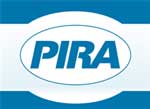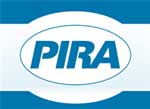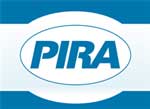 NYC-based PIRA Energy Group believes that Brent crude prices will continue to gradually strengthen for the next few months. In the U.S., commercial crude and product inventories both declined this past week. In Japan, crude runs decline while crude and product stocks rise. Specifically, PIRA’s analysis of the oil market fundamentals has revealed the following:
NYC-based PIRA Energy Group believes that Brent crude prices will continue to gradually strengthen for the next few months. In the U.S., commercial crude and product inventories both declined this past week. In Japan, crude runs decline while crude and product stocks rise. Specifically, PIRA’s analysis of the oil market fundamentals has revealed the following:
European Oil Market Forecast
Brent crude prices will continue to gradually strengthen for the next few months reflecting improving crude balances with higher refinery runs, increased shipments to Asia, flattening United States/non-OPEC crude production and rising geopolitical concerns. Refinery runs will ramp up as maintenance winds down, peaking in June-August in the Atlantic Basin.
First Major U.S. Stock Draw of 2015
U.S. commercial crude and product inventories both declined this past week. The strongest weekly product demand of the year combined with relatively low crude imports to push stocks lower. The year-on-year stock excess narrowed by 9 million barrels to 157 million barrels or to a still large 14.4%.
Japanese Crude Runs Decline, While Crude and Product Stocks Rise
Two weeks of data were released this past week covering the traditional May holiday period. Crude runs eased both weeks, while crude and finished product stocks rose both weeks. Gasoline demand was higher, while most other product demands eased. Kerosene stocks began to build seasonally. The indicative refining margin remains good, but it has been coming off its highs.
Asia-Pacific Oil Market Forecast
Oil balances are tightening. A global crude surplus has been built, but it is about to be reduced as runs continue to rise supported by healthy refining margins. The balances will be increasingly helped by slowing non-OPEC supply growth as 2015 plays out, and then outright year-on-year declines in non-OPEC supply as we move towards year-end. Over the summer, Middle East producers, particularly Saudi Arabia and Abu Dhabi, will have limited additional barrels for sale as new refineries continue their ramp up and increased summer burn absorbs supply. Strategic reserve purchases of crude oil in India and China will add to crude demand.
Energy Commodities Continue to Strengthen
On a weekly average basis the S&P 500 rose modestly, and closed at a record high on Friday. Emerging market debt prices fell slightly with higher yields. Bond yields on Greek debt eased modestly as a resolution to the Greek debt problem continues to be worked through. The total commodity index rose on the week, as did energy. The U.S. dollar has continued to weaken against many currencies with noted declines against the euro, British pound, and Russian ruble. The Shanghai Interbank Offer Rate eased for the tenth straight week. Bond yields for longer term maturities have risen in the U.S., Europe, Canada, UK and Japan. The Chinese policy interest rate (1-year banking lending rate) was cut again.
European LPG Imports Saturating Demand
Well supplied markets are facing limited incremental demand in Europe. Coaster sized lots of propane were called a significant $50/MT (13%) lower on the week near $320/MT while the spread to larger cargoes widened to $60, indicating that prices on the latter will face increasing pressure in the coming weeks. Large butane cargoes fell 7% to $399, while barges were little changed.
U.S. Ethanol Prices Higher
The rally in U.S. ethanol prices continued the week ending May 8 as many plants were shut down for spring maintenance. Higher petroleum values also provided support.
Ethanol Production Rebounds
U.S. ethanol production rebounded from a six-month low the week ending March 8 as several plants came back online following spring maintenance. Output rose to 912 MB/D from 887 MB/D in the previous week.
The information above is part of PIRA Energy Group's weekly Energy Market Recap - which alerts readers to PIRA’s current analysis of energy markets around the world as well as the key economic and political factors driving those markets.


 NYC-based
NYC-based  NYC-based
NYC-based  The oil & gas industry currently suffers a shortage of mid-career professionals primed for leadership & supervisory roles, the legacy of the last oil price downturn in the 1980s to mid-90s. At that time the industry endured significant job losses, and hiring came to a standstill. As a result of the limited talent added, the group of individuals advancing into supervisory or eventual leadership positions in the oil and gas industry is notably small.
The oil & gas industry currently suffers a shortage of mid-career professionals primed for leadership & supervisory roles, the legacy of the last oil price downturn in the 1980s to mid-90s. At that time the industry endured significant job losses, and hiring came to a standstill. As a result of the limited talent added, the group of individuals advancing into supervisory or eventual leadership positions in the oil and gas industry is notably small. NYC-based
NYC-based  For the US energy industry, 2014 will be remembered as the year when crude oil prices fell below 50 $/bbl, resulting in significant realignments in the sector. Aside from the oil price collapse and the historic high of domestic natural gas production, several other energy records were set last year. Both solar and wind energy production reached an all-time high in the US, contributing to a record 9.8% of total primary energy supply.
For the US energy industry, 2014 will be remembered as the year when crude oil prices fell below 50 $/bbl, resulting in significant realignments in the sector. Aside from the oil price collapse and the historic high of domestic natural gas production, several other energy records were set last year. Both solar and wind energy production reached an all-time high in the US, contributing to a record 9.8% of total primary energy supply. When oil prices dramatically dropped in the fall of 2014, operators began to significantly alter their plans. As months passed, many thought service providers would gain clarity on the upstream situation and begin to develop their own strategic plans. However, as we have progressed toward mid-2015, as answers have been obtained, many new questions have arisen.
When oil prices dramatically dropped in the fall of 2014, operators began to significantly alter their plans. As months passed, many thought service providers would gain clarity on the upstream situation and begin to develop their own strategic plans. However, as we have progressed toward mid-2015, as answers have been obtained, many new questions have arisen. NYC-based
NYC-based  2015 may well be remembered as the year when natural gas truly announced itself as the major energy fuel source. With the announcement that Shell are targeting a $70bn deal for BG Group, and in doing so increasing their current LNG capacity to around 33 million tons per annum, the big dollars to secure gas capacity are coming into sharp focus. Should the acquisition complete, Shell will have access to gas resources from Trinidad & Tobago to Tanzania. BG’s Queensland Curtis LNG project could also provide a viable option to develop the major Arrow coal-seam gas development in Australia.
2015 may well be remembered as the year when natural gas truly announced itself as the major energy fuel source. With the announcement that Shell are targeting a $70bn deal for BG Group, and in doing so increasing their current LNG capacity to around 33 million tons per annum, the big dollars to secure gas capacity are coming into sharp focus. Should the acquisition complete, Shell will have access to gas resources from Trinidad & Tobago to Tanzania. BG’s Queensland Curtis LNG project could also provide a viable option to develop the major Arrow coal-seam gas development in Australia. NYC-based
NYC-based  Jennifer Hall, Business Development Manager for TRACS, Assets, and Derek Austin, managing director of TRACS Assets, look forward to showcasing ‘TRACS Mobile’ at May’s Offshore and Technology Conference (OTC) 2015 in Houston.
Jennifer Hall, Business Development Manager for TRACS, Assets, and Derek Austin, managing director of TRACS Assets, look forward to showcasing ‘TRACS Mobile’ at May’s Offshore and Technology Conference (OTC) 2015 in Houston.  The industrial revolution and ensuing growth of the great cities of the western world some 200 years ago was enabled by a change in primary energy supply – from wood to coal. Today it is said we are at the beginning of another period of change, from fossil fuels to sustainable energy – the move from black to green. However, this cannot be achieved all at once, it is a long journey and the first step is to change from burning highly polluting coal to cleaner natural gas.
The industrial revolution and ensuing growth of the great cities of the western world some 200 years ago was enabled by a change in primary energy supply – from wood to coal. Today it is said we are at the beginning of another period of change, from fossil fuels to sustainable energy – the move from black to green. However, this cannot be achieved all at once, it is a long journey and the first step is to change from burning highly polluting coal to cleaner natural gas. NYC-based
NYC-based  When the price of oil started its tumble late last fall so too did the oilfield services (OFS) market. The rig count in the U.S. has been halved compared to this time last year and operators are struggling across the board to cut costs in this low price environment. Some of the major U.S. shale plays are being hit harder than others, some will bounce back quickly while others may start to fade away.
When the price of oil started its tumble late last fall so too did the oilfield services (OFS) market. The rig count in the U.S. has been halved compared to this time last year and operators are struggling across the board to cut costs in this low price environment. Some of the major U.S. shale plays are being hit harder than others, some will bounce back quickly while others may start to fade away. NYC-based
NYC-based  While the latest revisions to the terms for shallow water areas in Mexico’s first licensing round have increased the attractiveness of the Production Sharing Agreement terms by improving the contractor’s upside potential, the benefits remain significantly limited at higher prices compared to other fiscal regimes in the Americas, says an analyst with research and consulting firm
While the latest revisions to the terms for shallow water areas in Mexico’s first licensing round have increased the attractiveness of the Production Sharing Agreement terms by improving the contractor’s upside potential, the benefits remain significantly limited at higher prices compared to other fiscal regimes in the Americas, says an analyst with research and consulting firm  Despite major cost reduction measures, Q1 2015 earnings for supermajors are expected to be the weakest in recent memory. Operational and financial indicators for FY 2014, however, reveal that recent performance amongst the big 5 has been far from homogeneous.
Despite major cost reduction measures, Q1 2015 earnings for supermajors are expected to be the weakest in recent memory. Operational and financial indicators for FY 2014, however, reveal that recent performance amongst the big 5 has been far from homogeneous.